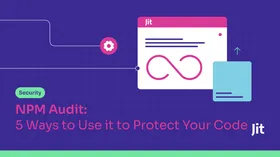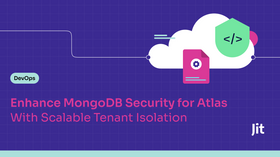Promote Secure Software Development with These Developer Engagement Tactics
Updated April 30, 2024.

Developers are responsible for mitigating risk of web applications through secure software development. This requires a culture of secure software development, which can be promoted with tactics that engage developers in the security process.
By integrating code security scanning and regular code review into the software development lifecycle (SDLC), development teams can ensure that applications are not only functional and well-performing, but also secure from potential vulnerabilities right from the start.
However, developers frequently encounter challenges when adopting security practices. Balancing the swift pace of development cycles with the detailed requirements of security measures can be difficult, often resulting in resistance to essential security protocols.
Utilizing DevSecOps effectively requires understanding these challenges and aiming to incorporate security in a way that feels intuitive rather than intrusive.
The Challenges of Secure Software Development
Engaging developers in code security presents a unique set of challenges that can significantly impact the effectiveness of security practices within the software development lifecycle. At the end of the day, no number of security tools can improve the security posture of your product if developers aren’t using them to secure their code.
The main challenges hindering developer engagement for secure software development include:
Perception of Security as an Obstacle
Developers might perceive security practices as cumbersome barriers that not only slow down their workflow but also add complexity to their tasks. This perception can lead to reluctance to adopt security measures, as developers prioritize maintaining their productivity and meeting deadlines over implementing these practices.
Lack of Security Knowledge
One of the fundamental challenges is the gap in knowledge regarding security vulnerability remediation.
Like any software development domain, code security is a skill that requires continuous learning and practice. While there are plenty of code scanning tools that claim to enable secure software development, if developers are unable to resolve the vulnerabilities, these tools won’t do much to improve the security posture of your product.
Aim to facilitate a culture of consistent learning within your workforce so that developers understand the evolving nature of security threats and stay on top of the best practices for DevSecOps.
» Read more about the key techniques every DevSecOps pro needs
False positives and slow scanning times
As described in the previous section, developers may require considerable time to research and fix vulnerabilities. If a developer spends this time only to realize that the security tool returned a false positive, they could be discouraged from trying to fix security issues in the future.
For this reason, false positives are perhaps the quickest way to erode developer faith in secure software development practices. Why spend the time if there is nothing to fix?
Similarly, slow scanning times can turn developers off of code security processes by requiring them to wait around as their code is being analyzed.
Tool Sprawl
Introducing new security tools into the development environment can be disruptive, especially if these tools do not integrate smoothly with existing workflows and systems.
Product security can include many different tests and analysis, including Static Application Security Testing, Software Composition Analysis, IaC scanning, secrets detection, Dynamic Application Security Testing, and many more. Learning and utilizing a full stack of many different tools, UIs, and UXs to identify and resolve security issues can be overwhelming and burdensome.
Understanding the impact
It is not always clear why a security issue needs to be addressed in the first place. Many code security tools return long lists of vulnerability backlogs – it's unrealistic to expect them all to be resolved.
Which security issues should be prioritized? Are they exploitable in production, or do they reside in a mundane service? How will remediation impact the security posture of the application?
These questions should be easy to answer during the code scanning and remediation process, or else developers may not understand why they need to resolve the issue.
Promote secure software development with these developer engagement tactics
1. Embed security scanning and remediation into the IDE or PR
Embedding security directly into the Integrated Development Environment (IDE) or Pull Request (PR) is a great first step to promoting secure software development. Rather than forcing developers out of their environment to find and fix issues, it's easier to incorporate security feedback when it's embedded in their native tools.
By integrating security early in the SDLC, development teams can avoid lengthy remediation cycles that require triaging vulnerabilities in production back to specific developers. The whole promise of “shift left” security is to save time by avoiding this cycle.
Of course, anyone can add security scanning early in the CI/CD pipeline, including the IDE and PR. Tools like Jit can also include remediation in this process, so that developers never need to leave their tool sets to resolve security issues.
This minimizes disruptions and enables developers to promptly identify and remediate vulnerabilities, reducing the learning curve and resistance often seen with DevSecOps tools that have an entirely separate UI and UX.
» Learn more about building a DevSecOps pipeline to shift security left
2. Change-based code scanning
When developers think about code security tools and workflows, they’re probably reminded about the painful process of scrolling through long lists of vulnerability backlogs for each PR created. The trouble is that most of these vulnerabilities probably have nothing to do with the change they just made.
Most security tools return results from the entire code repository after each code change, which makes it difficult to determine which findings are actually related to the change they just made.
Enter change-based scanning.
With immediate feedback on the security of each specific code change, developers can quickly understand how their new code impacts the security of their application. This makes it easy to focus on the security issues that are most interesting to developers at the moment of code commits: the ones they’re about to push into production.
>>Learn more about change-based scanning with Jit
3. Alert on what really matters
Focus on issues which really impact the overall security risk of the application. Consider accessibility, reachability, exploitability. For example, is this issue in production and can it be exploited?
Alerting on issues that don’t pose real security risk is an easy way to dissuade developers from engaging with security processes and tools.
4. Actionable remediation and code suggestions
Providing developers with clear, actionable guidance on how to remedy identified security issues is a key aspect that can significantly increase their productivity.
There are plenty of security tools that can surface vulnerabilities, but helping developers understand the root cause and remediation strategies is critical for secure software development and issue resolution.
Tools like Jit can take fast remediation a step further by providing automated code suggestions to solve the issue, rather than requiring the developer to research and write the fix themselves. Automated fixes can drastically reduce the time developers spend on security-related tasks, allowing them to do what they do best: write code.
5. Communication Tool Integration
Utilizing communication tools such as Slack, Microsoft Teams, or Jira for handling security alerts and notifications can be beneficial for keeping developers informed about potential vulnerabilities.
Communication tools provide developers with immediate awareness, allowing for facilitated team discussions and fostering a collaborative approach to security, while reducing mean-time-to-detection (MTTD).
This strategy enhances the security culture within teams, making the resolution of vulnerabilities a collective responsibility and ensuring that developer engagement with DevOps security practices remains high.
6. Gamification in Security
Gamifying security within the development workflow boosts developer engagement by making security tasks interactive and rewarding.
Incorporating challenges, leaderboards, and rewards transforms the mundane task of fixing vulnerabilities into a compelling activity. Strategies such as competitions for zero vulnerabilities and rewards for patches encourage active participation in security practices.
In the long run, this could foster a competitive yet collaborative environment, enhancing the developer security culture among teams and making security a rewarding aspect of the development process.
>> Dive deeper into gamification for developer security
Build security into your development culture with Jit
Implementing secure software development processes requires strong developer engagement with best practices for product security. Strategies like IDE integration, CI/CD automation, communication tools, and gamification present a path toward seamless security practices.
Jit simplifies this integration, making security adoption much more accessible and easier for developers. By unifying the full code-to-cloud security toolchain under one roof, developers get a consistent experience across SAST, SCA, secrets detection, and more. All of the analyses and results are delivered entirely within the IDE or PR, so developers never need to leave their native environment to address security issues.
With Jit, you can transform your security from a cumbersome obligation into an integral and rewarding part of development, enabling teams to build secure software more effortlessly.





